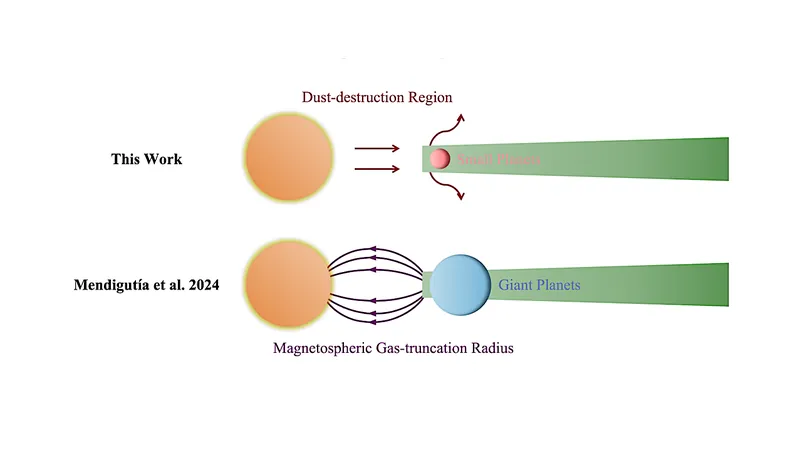
Unraveling Planetary Edge Trends: The Secrets of the Inner Edge Revealed!
2025-01-12
Author: John Tan
Introduction
In a groundbreaking study, scientists have examined the critical position of the innermost planets in various planetary systems, known as the inner edge. This research reveals profound insights into how these planets relate to their host stars, offering exciting implications for understanding the processes of planetary formation and evolution.
Research Methodology
Utilizing data from the Kepler Data Release 25 (DR25), along with information from LAMOST and Gaia, scientists have explored the intriguing connection between the mass of stars and the positioning of the inner edge within multi-planetary systems, particularly focusing on smaller planets like super-Earths and sub-Neptunes.
Key Findings
The findings confirm a significant trend: as the mass of a star increases, the position of the inner edge moves outward. This correlation is stronger than previously documented, showcasing a power-law index ranging from 0.6 to 1.1. This enhancement in the correlation can be attributed to two key factors: the incorporation of metallicity corrections and the inadequacy of earlier studies that relied on occurrence rates. These improvements have led to a clearer understanding of the relationship between stellar mass and the innermost orbital limit of small planets.
The Influence of Protoplanetary Disks
Furthermore, by juxtaposing observational data with current theoretical models, researchers observed that the pre-main-sequence (PMS) dust sublimation radius of protoplanetary disks aligns with the trends observed in the mass of stars at the inner edge. This indicates that the dust present in these disks may play a crucial role in controlling the orbit of small planets, setting limitations on how close they can orbit their stars.
Comparative Mechanisms
Interestingly, the study highlights a stark contrast in mechanisms when comparing the inner edges of small planets to those of hot Jupiters, which are influenced by the magnetospheres of gas disks. This discovery underscores the notion that different categories of planetary populations may be regulated by diverse processes.
Conclusion
As the field of exoplanet research continues to expand, these revelations about planetary edge trends not only illuminate the intricacies of celestial mechanics but also enhance our comprehension of the universe's formation history. Stay tuned for more exciting discoveries in the realm of astronomy!
 Brasil (PT)
Brasil (PT)
 Canada (EN)
Canada (EN)
 Chile (ES)
Chile (ES)
 Česko (CS)
Česko (CS)
 대한민국 (KO)
대한민국 (KO)
 España (ES)
España (ES)
 France (FR)
France (FR)
 Hong Kong (EN)
Hong Kong (EN)
 Italia (IT)
Italia (IT)
 日本 (JA)
日本 (JA)
 Magyarország (HU)
Magyarország (HU)
 Norge (NO)
Norge (NO)
 Polska (PL)
Polska (PL)
 Schweiz (DE)
Schweiz (DE)
 Singapore (EN)
Singapore (EN)
 Sverige (SV)
Sverige (SV)
 Suomi (FI)
Suomi (FI)
 Türkiye (TR)
Türkiye (TR)
 الإمارات العربية المتحدة (AR)
الإمارات العربية المتحدة (AR)